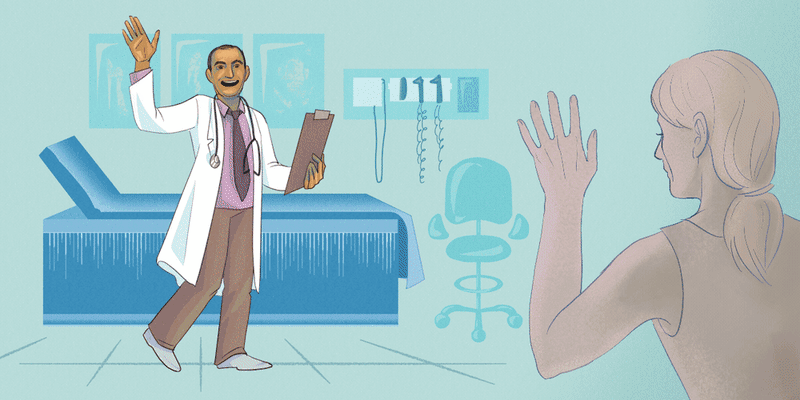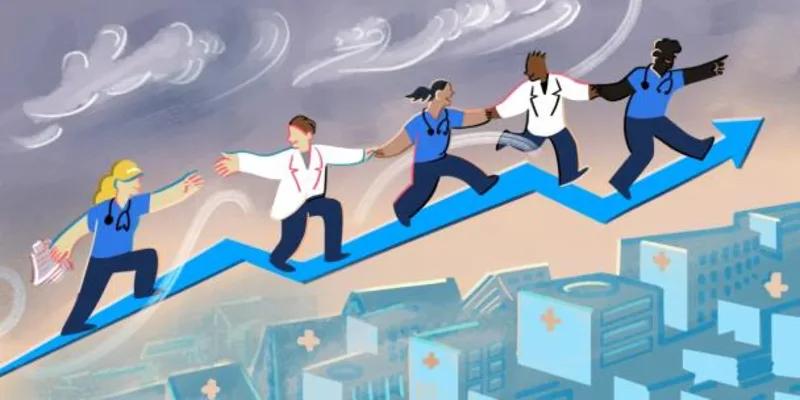Recently, the National Telecommunications and Information Administration (NTIA) accepted public comment on ideal disbursement of the Digital Equity Act's 2.75 billion in funds. This Act aims to “ensure that all people and communities have the skills, technology, and capacity needed to reap the full benefits of our digital economy.” As a practicing physician in Atlanta, Georgia who has cared for underserved communities and built my career on the advancement of health equity and digital health technologies, I can answer the simple yet complex question of Why does this matter?
Our world has moved to be digital and online, even for medicine and health care. These funds can and should be used to advance digital health equity in the communities most in need of improvements, which can be identified by using tools such as the Area Deprivation Index which incorporate the Social Determinants of Health (SDOH) as the foundation of their employ and analysis. This approach is necessary for the creation of frameworks aimed at erasure of the inequities that exist with the development of new digital health advancements.
Achieving digital health equity means using the knowledge of these communities and meeting them where they are, and asking them what they need. This means that current EHR systems used and those in future development must be tailored to the specific needs of the communities they serve. I previously practiced in rural communities in Georgia (Spalding, Pike, and Upson Counties), and I have family members who live in rural communities in Georgia (Burke and Screven Counties). There is often a paucity of sustainable options for internet access that will allow for reasonable, consistent, and ideal options for such services, which means that patients aren’t getting the digital health care they deserve. Rural communities are negatively impacted by this inequity. Within those same rural areas, Black and brown individuals are impacted even more disproportionately.
What must be done with the funding provided? With the funding, subsidies need to be provided through local civic organizations — such as the housing authority and senior citizens councils — to help elders and those of lower socio-economic status (SES) to be afforded financial assistance in purchasing broadband internet service. Here in Georgia, it has been shown via the efforts of researchers at Emory University's Rollins School of Public Health in collaboration with Omnimed, Inc., how patients with lower SES who could benefit tremendously from increased access to telehealth tools often do not even use those tools, due to various barriers not faced by those of higher SES, including access to internet services, access to information, and cost. Even in situations where those tools are publicly available, uptake of telehealth services by those of lower SES is lower and this is often influenced by inequitable access to necessary internet speeds. However, despite one of the goals of telehealth services being to expand health care access, the creation of more services in the telehealth space may widen the divide between those who are able to access these services and those who are not.
Expanding services available in rural communities to include fiber-based options such as Verizon Fios and Google Fiber is also important. Partnering should take place with local hospitals and hospital foundations of local acute care hospitals in rural communities to provide educational programming to teach citizens in rural communities how to use digital health services and telemedicine platforms. These services are typically associated with EHR systems and are being used in their local health care systems to expand access to health care and subspecialists that may not be available in rural communities. This will aid with funding to rural communities that are suffering financially and will allow them to work to realize the SDOH and digital literacies in the extension of telehealth services to the communities in which they provide care in creation of such educational programs. Providing grant funding for those interested in applying would be ideal. These hospitals can be considered "Digital Health Hubs," and we should incorporate faith-based institutions and institutions of worship as "Digital Health Hubs" as well. We know there is a clear association between the SDOH, digital literacy, and access to telehealth options influenced by the possession of skills, connectivity, devices, applications, and training and technical support.
We must not stop there. Connections should be fostered with tech organizations that are innovating and creating digital health tools and training programs for physicians that will reduce physician burnout and improve physician wellness. Networking with local state medical boards and physician organizations to provide education and training options on telehealth ethics, regulatory measures, and standards of care should also be undertaken. Leveraging Al and virtual scribe technologies is also an important step in limiting the day-to-day burden of physician documentation and fostering funding to independent practices and health systems with productivity compensation models will be most ideal to help with physician recruitment, retention, and improved patient health outcomes and productivity.
Finally, advocacy measures should be a mainstay of these efforts with key state, federal, and local players and health systems' informatics teams by creating a focus group to study the development and implementation of a fully functional Health Information Exchange (HIE) in each state that will be easily Utilizable, Unifying, Ubiquitous, Understandable, Uniform, and Updatable for the purposes of ensuring continuity of care and safe transitions. These are the six "U's" of an effective HIE. Requiring all health systems, private practices, small rural hospitals, independent mental health organizations, and the Department of Veterans Affairs to participate in this HIE is paramount. Patients are often seen at multiple access points of health care delivery in various systems with disparate EHRs within any given state, putting administrative burden on physicians and their practices to obtain countless paper medical records that may or may not be obtained in a timely manner. A statewide HIE for each state would help tremendously.
This funding matters for all physicians all over the country and in various specialties. It will help us extend access to care and our services for so many more patients who need our services and who without the provisions of this legislation will not be afforded crucial health care services. Rural communities are often plagued with inadequate primary care services and subspecialist options, so for those communities of individuals, this is paramount.
I call on all physicians to support the recommendations and to provide education to the NTIA on ways the funding provided by the Digital Equity Act can best help their care efforts equitably for all patients they serve.
Earl Stewart, Jr., MD, is an internal medicine physician in Atlanta, Georgia, a 2023 Doximity Digital Health Fellow, and a 2023 Climate and Health Equity Fellow with the Medical Society Consortium on Climate and Health.
Image by RNko / Getty







